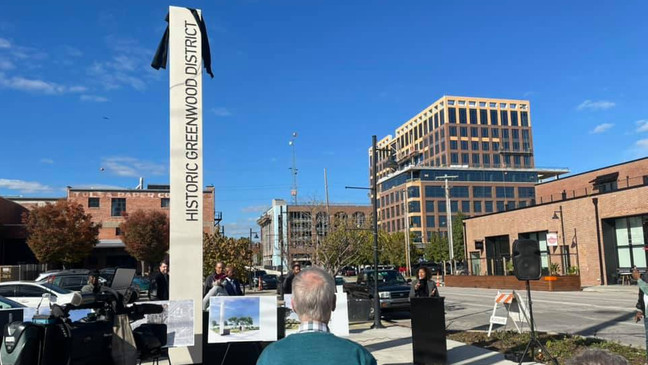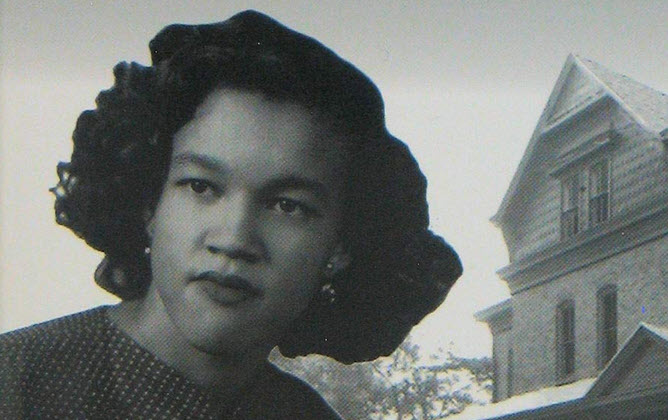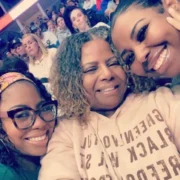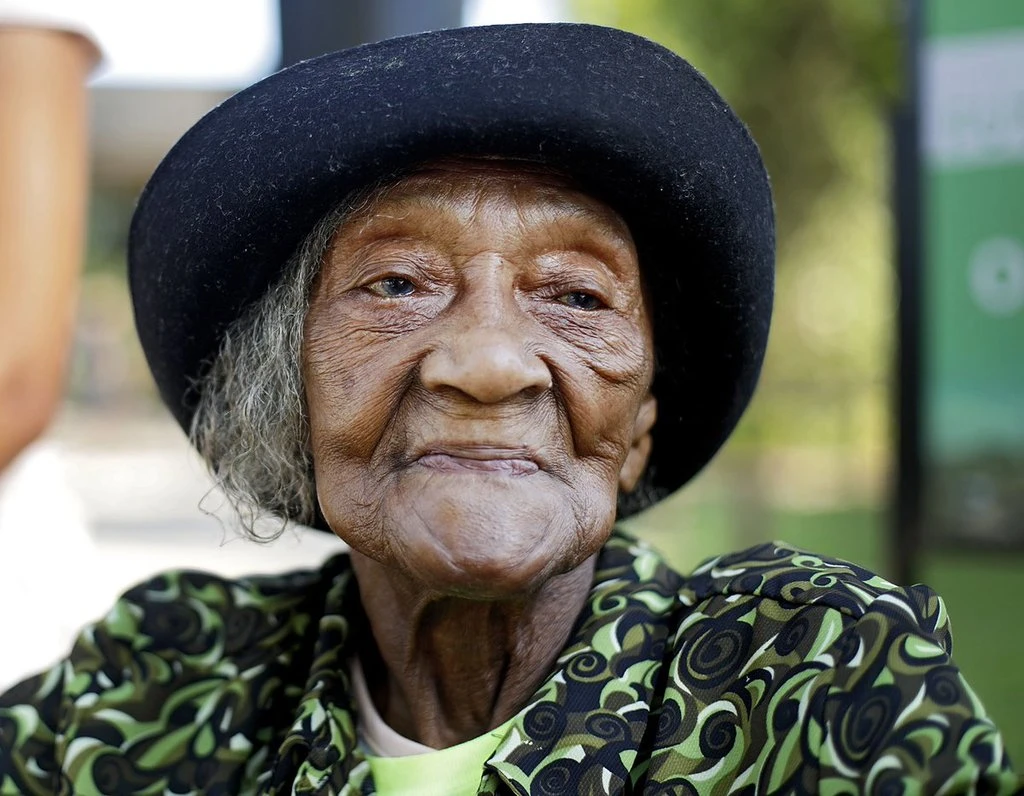
The Oklahoma Eagle Newswire
The final project of the 1921 Tulsa Race Massacre Centennial Commission was dedicated at E. Archer St. And M.L.K. Jr. Blvd.
A small group gathered Friday afternoon to dedicate the first of six boundary markers which will mark the edges of the historic Greenwood District. The boundary markers, which are the final project of the 1921 Tulsa Race Massacre Centennial Commission, were created as a reminder to all residents and visitors that they’re entering Greenwood.
“Greenwood is much larger than one short block that people see just two blocks from here,” said Phil Armstrong, Interim Executive Director, Greenwood Rising History Center during remarks at the dedication, “This was an area where 10-to-12 thousand African Americans lived. And when people try to grasp a concept of just how large geographically Greenwood was, and is today, we want people to know that.”
The boundary markers will be located on the northwest, north, northeast, southeast, southwest and west boundaries of historic Greenwood. The first of the markers installed is located at the corner of M.L.K. Jr. Blvd. and E Archer St., the southwest corner and closest to what is more commonly known as Greenwood.
“The story of Greenwood is the story of resiliency,” said Cassia Carr, Deputy Mayor of Tulsa. “Of a group of individuals that could rise up against such adversity and become a beacon of light for the whole world.”
The pillars will be taken care of and maintained by Greenwood Rising, the state-of-the-art history center located at the heart of the district.
The additional five pillars, all designed by Selser Schaefer Architects, will be installed in the coming months. The markers are each assigned with a cardinal direction and location on an engraved map. Built from granite and concrete, the markers resemble a stacked monolith – historically used to set boundaries and signify permanence. The outward-facing concrete shell welcomes people to the district – the inward-facing metal screen incorporates a pattern sourced from imagery of historic Greenwood brick, a defining characteristic of the district.
Additional speakers at the event included Sam Combs, Vice Chair for Greenwood Rising; Komari Crisp, a 2020 participant in the Youth Race and Leadership Forum, a collaborative program between Greenwood Rising and The Oklahoma Center for Community and Justice; and Senator Kevin Matthews, founder of the 1921 Tulsa Race Massacre Centennial Commission.
“The Greenwood District encompasses a large, vibrant and historic area in this city and will be dynamically distinguished and more commonly recognized by these historical boundary markers,” said Sen. Matthews. “The work of the commission was dedicated to telling the story of Black Wall Street and highlighting the legacy of the trailblazers who lived and worked in the Greenwood District. These markers help tell that story and will hopefully drive visitors to learn more about our history, and locals to spend more time in the district as a cultural tourism and education hub.”










